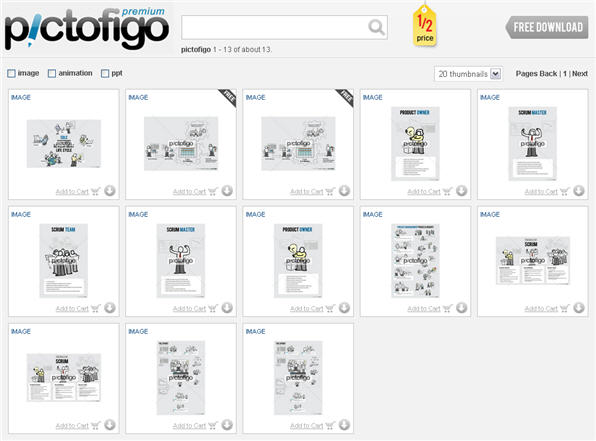I've been working with Pictofigo for a few months now. I give them ideas for drawings I think others would find helpful. In turn, I get access to some pretty cool (and original) stuff. It's quid pro quo at its best. There are currently over 900 drawings available for free on the Standard Pictofigo site. In addition to those, there are 13 Premium items. These items range from a few free desktop wallpapers to Scrum posters and traditional project management posters. What's the difference and why pay for stuff? The standard site has drawings at 72 dpi resolution, perfect for a blog, website or presentation. The Premium site has drawings at 300 dpi resolution, suitable for print or products. Yes, I do offer links from my site to CafePress, if you want printed posters. But, the actual high resolution drawings are available if you want to print out a few posters at a lower overall cost. I got a notice today that Pictofigo is going to run a half off promotion on their premium content. Because I like to encourage and support entrepreneurs, I wanted to write this quick post. If you're in the market for some original drawings, look them up. They are constantly iterating on the site so check back often. If you have an idea for a drawing or poster, give them a shout. If you want, you can send me the request and I'll forward it along. To be clear, I am not Pictofigo. I merely love what they do and want to see them succeed.

HT: Pictofigo




